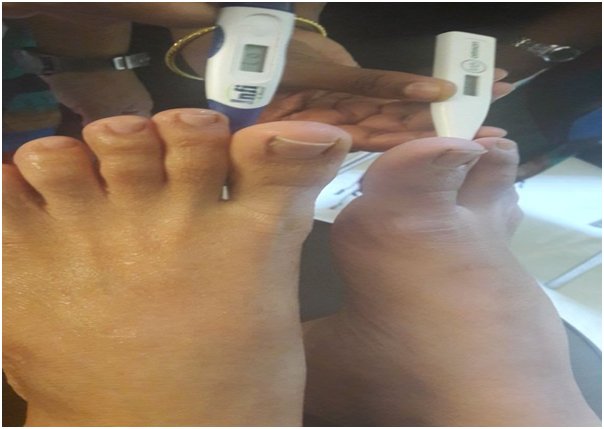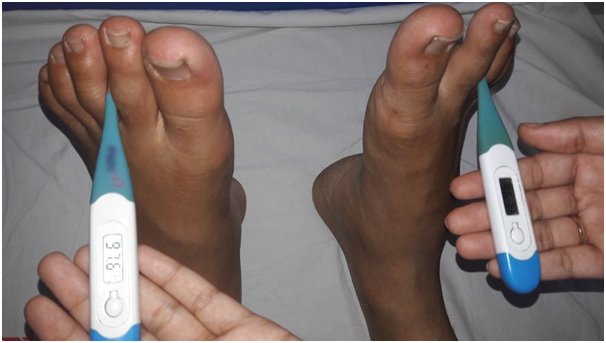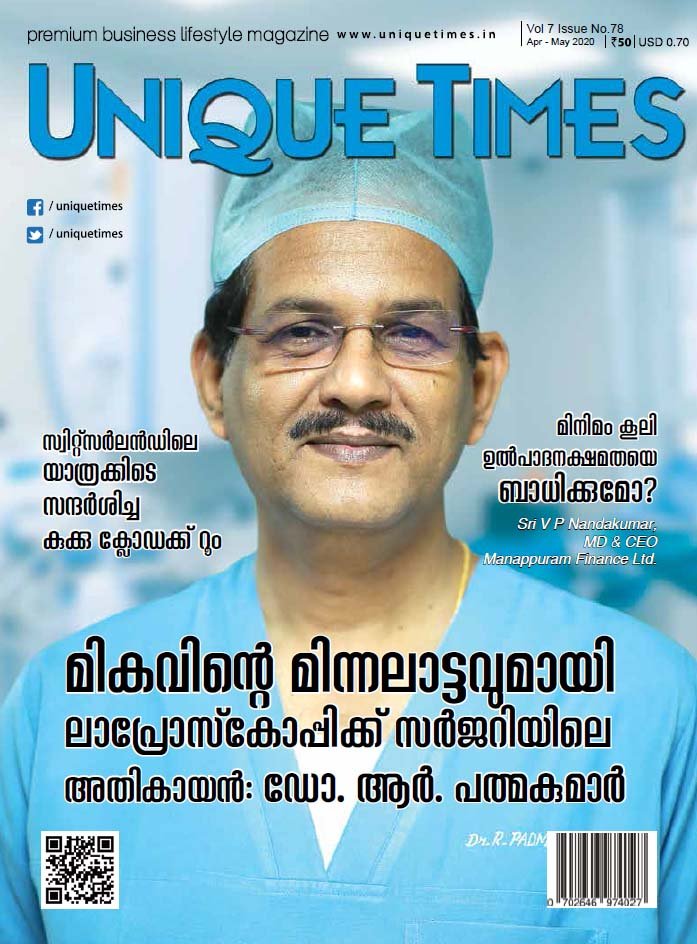Hyperhidrosis Treatment

Introduction
Hyperhidrosis is sweating in excess than that is required for normal thermoregulation. It begins in either childhood or adolescence. Although any site on the body can be affected by hyperhidrosis, the sites most commonly affected are the palms, soles, and axillae. Hyperhidrosis exists in 3 forms: Emotionally induced hyperhidrosis (in which it affects the palms, soles, and axillae, Localized hyperhidrosis, Generalized hyperhidrosis. Hyperhidrosis often causes great emotional distress and occupational disability for the patient, regardless of the form.It affects both sexes and affects persons of all ages.In a study of 850 patients with palmar, axillary, or facial hyperhidrosis, 62% of patients reported that sweating began since before they could remember; 33%, since puberty; and 5%, during adulthood.
Hyperhidrosis Treatment Options
There are two options for Hyperhidrosis treatment:
- Medical management
- Surgical management
Medical Management – Includes topical and systemic medications for hyperhidrosis treatment.
Sympathectomy – Sympathectomy is the surgical option for hyperhidrosis treatment and involves the surgical destruction of the ganglia responsible for hyperhidrosis.

Authors: Dr. R. Padmakumar, Dr. Madhukara Pai, Dr. Arun kumar S, Dr. Farish Shams, Dr. Zuhail Bin Nazar, Dr. Khaleel Abdulkader, Dr. Mabel Pereira, Dr. Anurag verma
Laparoscopic Lumbar Sympathectomy – Case Report
Laparoscopic Lumbar Sympthectomy for hyperhidrosis treatment of lower limb.
32-year-old male patient from Lakshadweep had reported to us with complaints from his childhood and was operated on right side retroperitoneoscopic lumbar sympathectomy before one year by same team. His complaints resolved completely on the right side. His symptoms are cold limb, profuse sweating of the left lower limb. When he used casual slippers, his slippers slip off and when he wears shoe, it pours out.
The temperature in lower limb was recorded pre-operatively and found to be very low. (less than 88 F) (Figure 1) Routine blood investigations and anaesthetic check-up was done, he was posted for retroperitoneoscopic lumbar sympathectomy under GA. Patient was operated and L2, L3, L4 ganglions removed. Patient had no issues in immediate post-op. Patients symptoms improved drastically in the post-op period. His temperature improved to 97.6 F and his limb became pinkish and was not having the issues of sweating. Patient was discharged on POD-2. (Figure 2)


Discussion
Anatomy
The sympathetic trunk lies lateral to the vertebral bodies for the whole length of the vertebral column. It communicates with the anterior rami of spinal nerves via rami communicants. The sympathetic trunk permits preganglionic fibres of the sympathetic nervous system to ascend to spinal levels superior to T1 and descend to spinal levels inferior to L2/3.
The superior end of it is continued upward through the carotid canal into the skull, and forms a plexus on the internal carotid artery; the inferior part travels in front of the coccyx, where it converges with the other trunk at a structure known as the ganglion impar.
Along the length of the sympathetic trunk are sympathetic ganglia known as paravertebral ganglia.The sympathetic trunk is a fundamental part of the sympathetic nervous system, and part of the autonomic nervous system. It allows nerve fibres to travel to spinal nerves that are superior and inferior to the one in which they originated. Also, number of nerves, such as most of the splanchnic nerves, arise directly from the trunks.
Pathophysiology
Hyperhidrosis may be idiopathic or secondary to other diseases, metabolic disorders, febrile illnesses, or medication use. Generalized hyperhidrosis may be secondary to numerous conditions including the following: Neurologic or neoplastic diseases, spontaneous periodic hypothermia and hyperhidrosis. Localized unilateral or segmental hyperhidrosis is rare and of unknown origin. The condition usually presents on the forearm or forehead in otherwise healthy individuals, without evidence of the typical triggering factors found in essential hyperhidrosis. Localized hyperhidrosis may also be associated with the following: gustatory stimuli, eccrine nevus.
Diagnosis/Evaluation
Diagnostic criteria favouring primary hyperhidrosis include excessive sweating of 6 months or more in duration, with 4 or more of the following:
- Primarily involving eccrine-dense sites (axillae/palms/soles/craniofacial).
- Bilateral and symmetric
- Absent nocturnally
- Episodes at least weekly
Visible signs of hyperhidrosis are clear.
If direct visualization of the affected areas by hyperhidrosis is desired, the iodine starch test may be used. This test requires spraying of the affected area with a mixture of 0.5-1 g of iodine crystals and 500 g of soluble starch. Areas that produce sweat turn black. If generalized hyperhidrosis is noted one must search for underlying causes by doing Thyroid Function Test, Blood glucose, Urine catecholamines, Uric acid levels, Purified Protein Derivative, and Chest x-ray to rule out Tuberculosis.
Hyperhidrosis Treatment
There are two options for hyperhidrosis treatment:
- Medical management
- Surgical management
Medical management
Hyperhidrosis treatment is challenging for both the patient and the physician. Both topical and systemic medications have been used.
Topical agents for hyperhidrosis treatment therapy include topical anticholinergics, boric acid, 2-5% tannic acid solutions, resorcinol, potassium permanganate, formaldehyde, glutaraldehyde, and methenamine. Systemic agents used to treat hyperhidrosis include anticholinergic medications such as propantheline bromide, glycopyrrolate, oxybutynin and benztropine. They are effective because the pre-glandular neurotransmitter for sweat secretion is acetylcholine (although the sympathetic nervous system innervates the eccrine sweat glands).
Other treatment options for hyperhidrosis include iontophoresis and botulinum toxin injections. Botulinum toxin injections are effective because of their anticholinergic effects at the neuromuscular junction and in the postganglionic sympathetic cholinergic nerves in the sweat glands.Radiofrequency ablation and use of microneedle radiofrequency therapy for axillary hyperhidrosis has been recommended.
Surgical management
Sympathectomy has been used as a permanent effective hyperhidrosis treatment method since 1920. Usually, it is reserved for the final treatment option. Sympathectomy involves the surgical destruction of the ganglia responsible for hyperhidrosis.
Lumbar sympathectomy is an effective hyperhidrosis treatment for lower limb hyperhidrosis. There are two approaches: open and minimal access approach.
In case of minimal access surgery there are transperitoneal and retroperitoneoscopic approach.
Retroperitoneoscopic approach:
The patient is placed in a lateral position. A 15-mm incision is made just below the 12th rib, and retroperitoneal space is created using blunt finger dissection. A custom-made, large balloon is inserted and inflated with the equivalent of 750 mL to 1000 mL of air. The second 10-mm port is placed in line with the first port above the iliac crest.The third and fourth 5-mm ports are placed anterior to the first 2 ports.Peritoneum is retracted anteriorly. The medial border of the psoas muscle is used as a landmark and a chain identified immediately medial to it. The second to fourth lumbar sympathetic ganglia are removed with the intervening chain. The port sites are closed without a drain.


Conclusion
Retroperitoneoscopic approach is better than open, as there is no cutting of muscles, also the blood loss is less, the patient has less post-op pain, also chance of wound infection are less comparatively.The patient goes home early, and goes to work the next day. Its comparatively safer than transperitoneal as the chance of bowel injury, infection is less as we are in the retroperitoneal space. Approaching sympathetic chainis also relatively easier for surgeon in case of retroperitoneoscopy.
References
- Altman RS, Schwartz RA. Emotionally induced hyperhidrosis. Cutis. 2002 May. 69(5):336-8. [Medline].
- Ruchinskas R. Hyperhidrosis and anxiety: chicken or egg?. Dermatology. 2007. 214(3):195-6. [Medline].
- Drott C, Gothberg G, Claes G. Endoscopic transthoracic sympathectomy: an efficient and safe method for the treatment of hyperhidrosis. J Am Acad Dermatol. 1995 Jul. 33(1):78-81. [Medline].
- Mader S. S. (2000): Human biology. McGraw-Hill, New York, ISBN 0-07-290584-0; ISBN 0-07-117940-2.
- Pritchard T. E., Alloway D. (1999): Medical neuroscience. Hayes Barton Press, ISBN 978-1-593772000
- Rodrigues Masruha M, Lin J, Arita JH, DE Castro Neto EF, Scerni DA, Cavalheiro EA, et al. Spontaneous periodic hypothermia and hyperhidrosis: a possibly novel cerebral neurotransmitter disorder. Dev Med Child Neurol. 2010 Dec 17. [Medline].
- Mehta S, Ralot T, Masatkar V, Agarwal N, Rana A. A curious case of hourly attacks of disabling episodic spontaneous hypothermia with hyperhidrosis. Indian J Dermatol VenereolLeprol. 2015 Mar-Apr. 81(2):185-6. [Medline].
Related Links
- Thyroglossal Cyst – Endoscopic Excision – First of its kind in Kerala
About Dr. R. Padmakumar
Dr. R. Padmakumar is one of the Best Hernia Surgeon in India. He has been changing lives through Keyhole Surgery. He has got more than 30 years of hands-on experience in laparoscopic Surgery in major hospitals across India and has completed more than 7000 cases of Laparoscopic Hernia Surgeries. Dr. Padmakumar has trained more than 300 surgeons from all over the world the art of laparoscopic surgery especially Laparoscopic Hernia Surgery. Dr. Padmakumar is also hailed as one of the Best Bariatric Surgeon in India & UAE. He is renowned for new and improved treatment techniques and the first in the World to perform Scarless Bariatric Surgery with Tummy Tuck / Abdominoplasty. He is also one of the very few thyroid surgeons in India doing Endoscopic Thyroidectomy (scarless thyroid surgery).


-
Anal Fissure Treatment
-
Gynaecomastia Treatment
- Piles / Hemorrhoids Treatment
- Varicose Veins Treatment
- Laser Treatment for Varicose Veins
- Diabetic Foot Treatment







